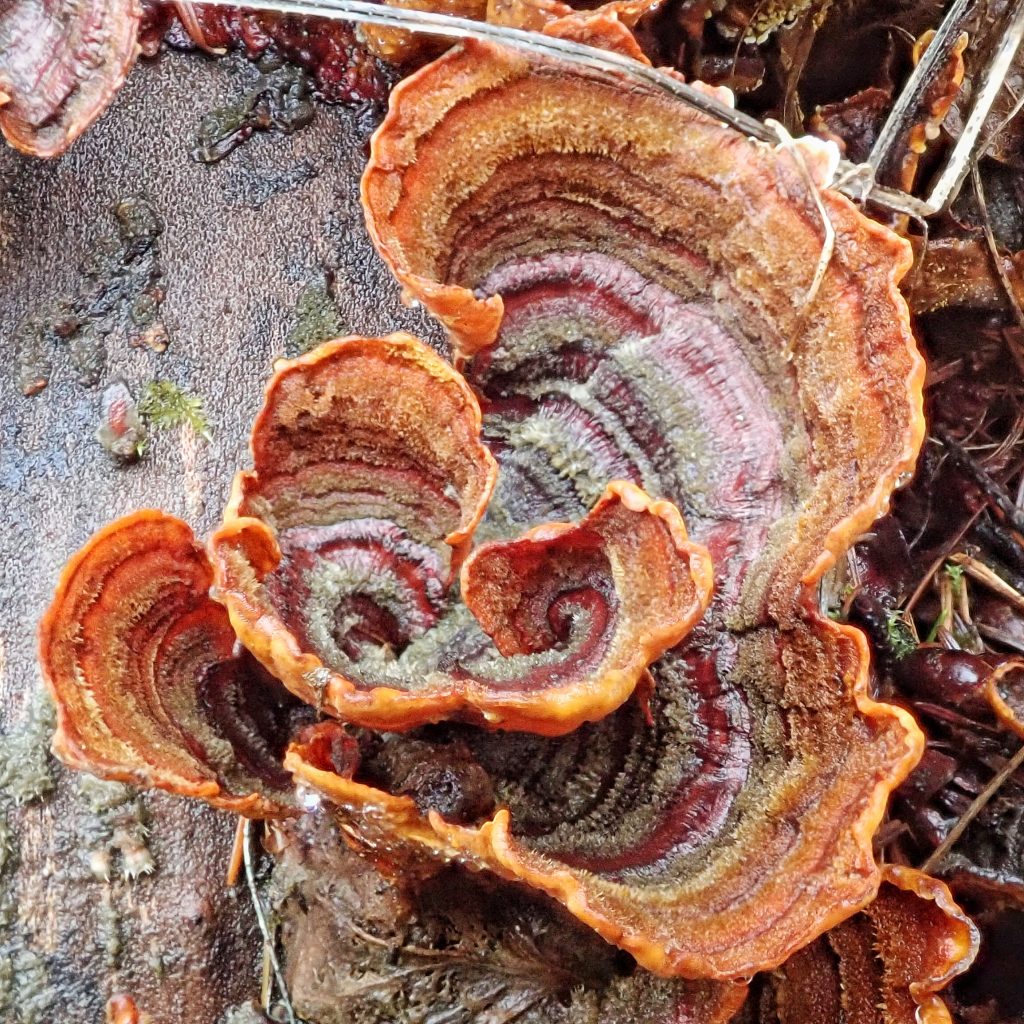
Prior to this winter I would surely have (and probably did with other specimens of this species) called this fungus a Turkey Tail, and beyond taking a few seconds to admire its beauty of form, color, and pattern, I would have just walked on by. But the more I learn about the bracket and crust fungi, the more intrigued I become, and I now have a hard time passing one without taking a close look and snapping some photos. Stereum hirsutum (which also goes by the common names false turkey tails, hairy curtain crust, and hairy parchment, amongst others) was high on my list of fungi I wanted to find. Not that it is rare. In fact it is said to be one of the most common fungi in our region. It’s just that I felt embarrassed to have never acknowledged one for what it truly was. Speaking of acknowledging, I want to thank Kem Luther for taking the time to verify my identification.
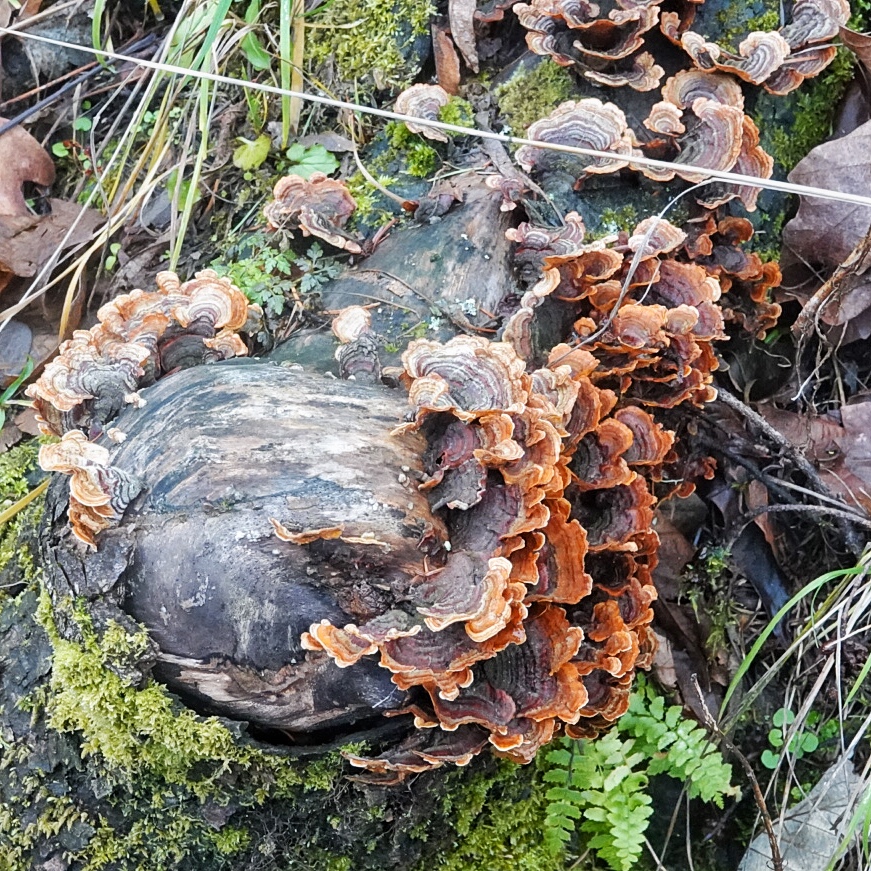
As usual with fungi, the taxonomy is, at present, up in the air, although it’s scientific name, which it has borne since SF Gray bestowed it in 1821, is not likely to change. But the lumpers think that several presently recognized species (including Stereum complicatum, S. ostrea, S. gausapatum, S. styracifluum, and S. versicolor) should be synonomized with Stereum hirsutum, while I’m sure there are splitters who think the taxa found in Eurasia or Australia should be segregated from those found here. The genus Stereum has recently been removed from the rather catchall crust fungi family Corticiaceae, and placed in the family Stereaceae.
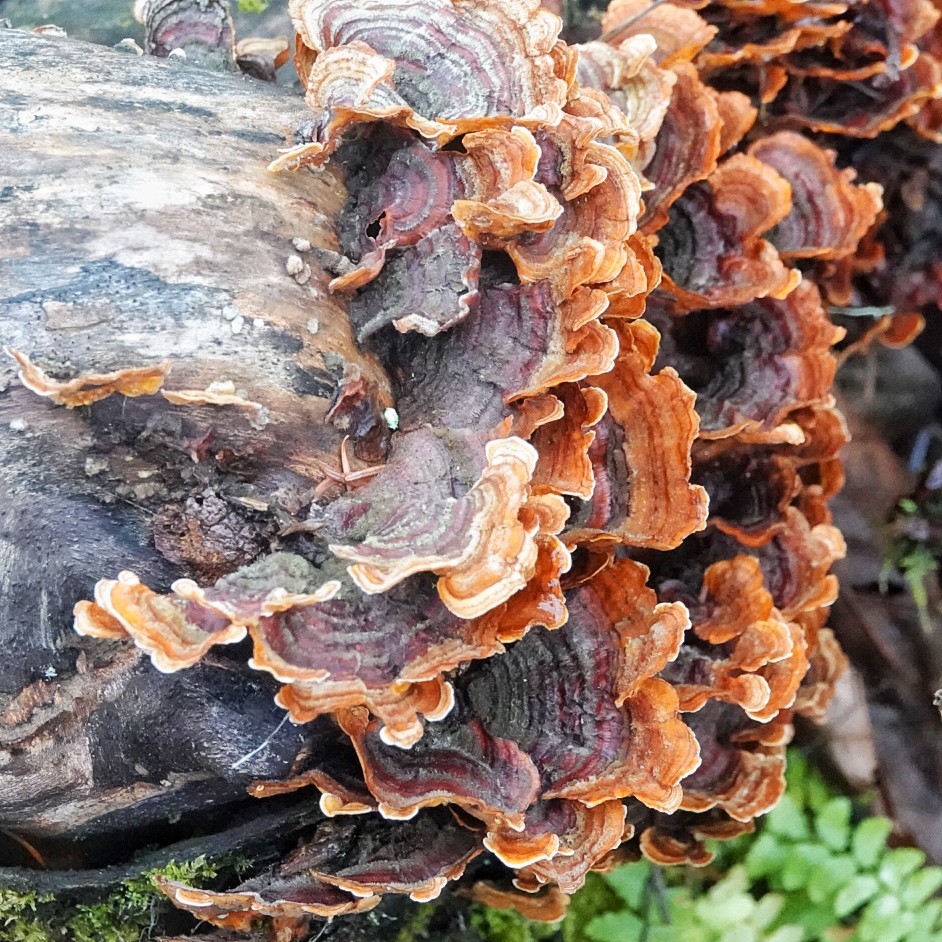
So often when profiling fungi I end up talking a lot about taxonomy, and while I find that interesting, and completely agree that we need to know what to call them before we can effectively study them, still I wish a higher proportion of the brainpower of the scientific community was directed towards finding out exactly what ecological niche a given taxon occupies, such as what eats them or what specifically the spores need to germinate and survive and thrive. Names are great, but it’s relationships that define an ecosystem. And I can almost never find species specific information on the animals that eat a given fungi.
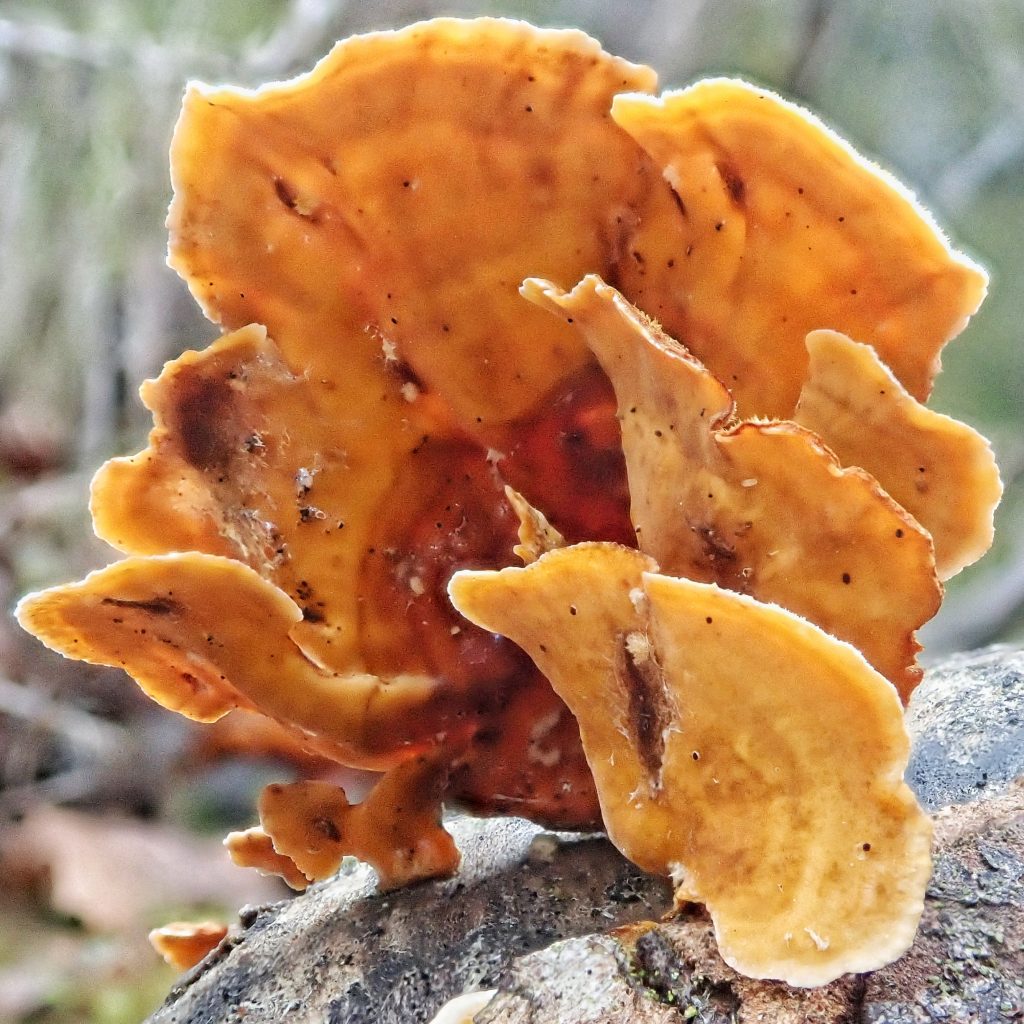
Stereum hirsutum is not considered to be edible, but that is not because it is toxic. It is simply too tough to eat. It does however have some medicinal properties. An extract from its mycelia is effective against some MRSA strains, and it has epidioxysterols that have proven effective against tuberculosis. Dry extract of the cap has shown possibilities as an blood thinning agent, providing a possible alternative to warfarin. And it also has been shown to have antioxidant properties in commercial production of prepared food.
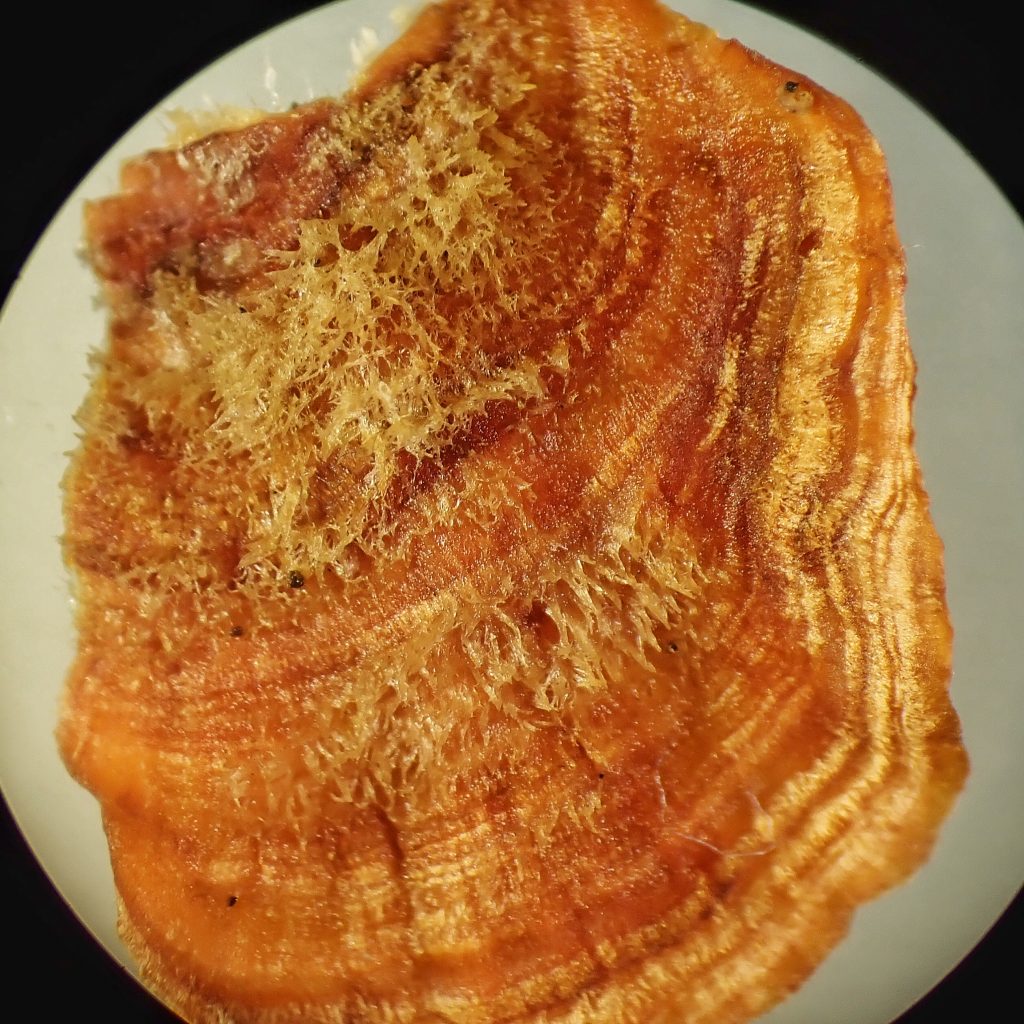
Description-Highly variable, but usually forms rows or semicircular rosettes or funnels of medium sized (up to 2” in width, and protruding up to 1.5” from the substrate), thin, leathery, orange, red, brown, grey, and/or beige, fan shaped caps with alternating bands of color (a pattern called zonate) and wavy edges; may also form crusts on the underside of logs; ventral surface various shades of orange, and has no pores or gills; thickly hairy when young, although they get smoother with age; spore print white, spores cylindrical, twice as long as wide, 5-7μm long.
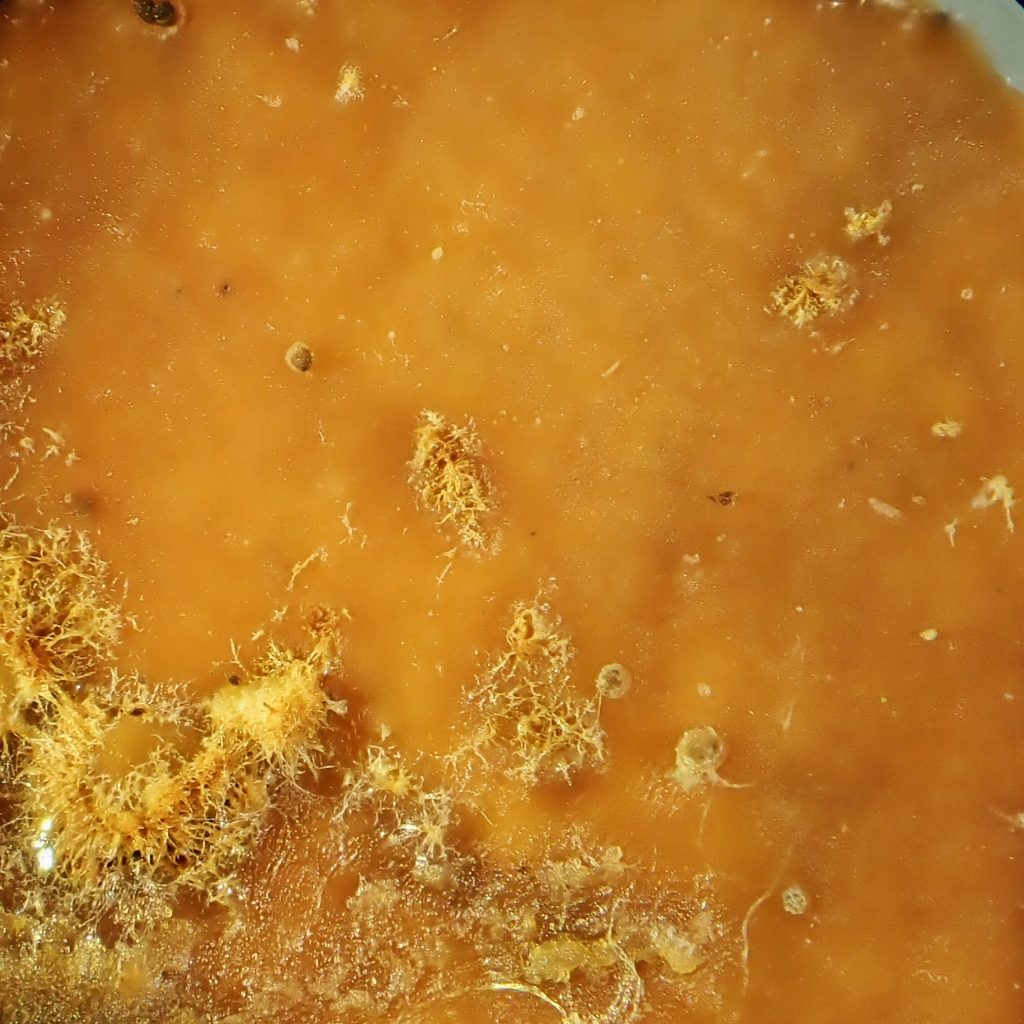
Similar species–Stereum ochraceoflavum is smaller, with a buff colored ventral surface, and grows on branches and twigs; S. sanguinolentum and S. gausapatum bleed red when fresh; Veluticeps abietina has a very dark dorsal surface, and a mauve to brownish purple ventral surface; other bracket and crust fungi have pores.
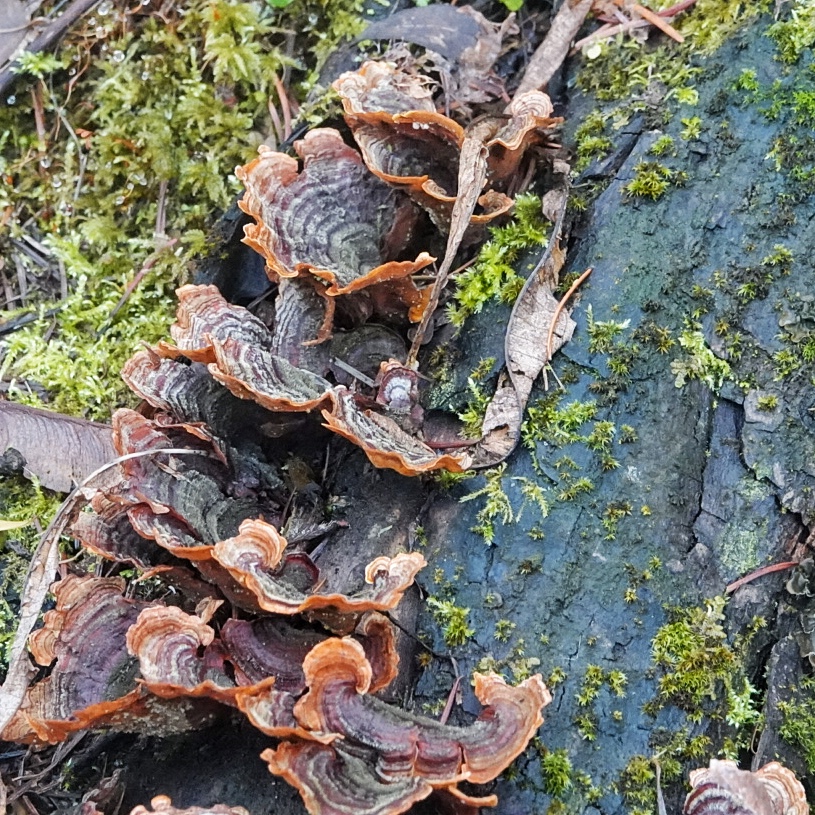
Habitat-On dead or dying hardwood and conifer stumps, logs, or snags.
Range-Virtually worldwide, although it is probably absent from Antarctica; region wide in appropriate habitat.
Reproductive timing-Fruiting bodies may persist year around, but spores are released in the fall.
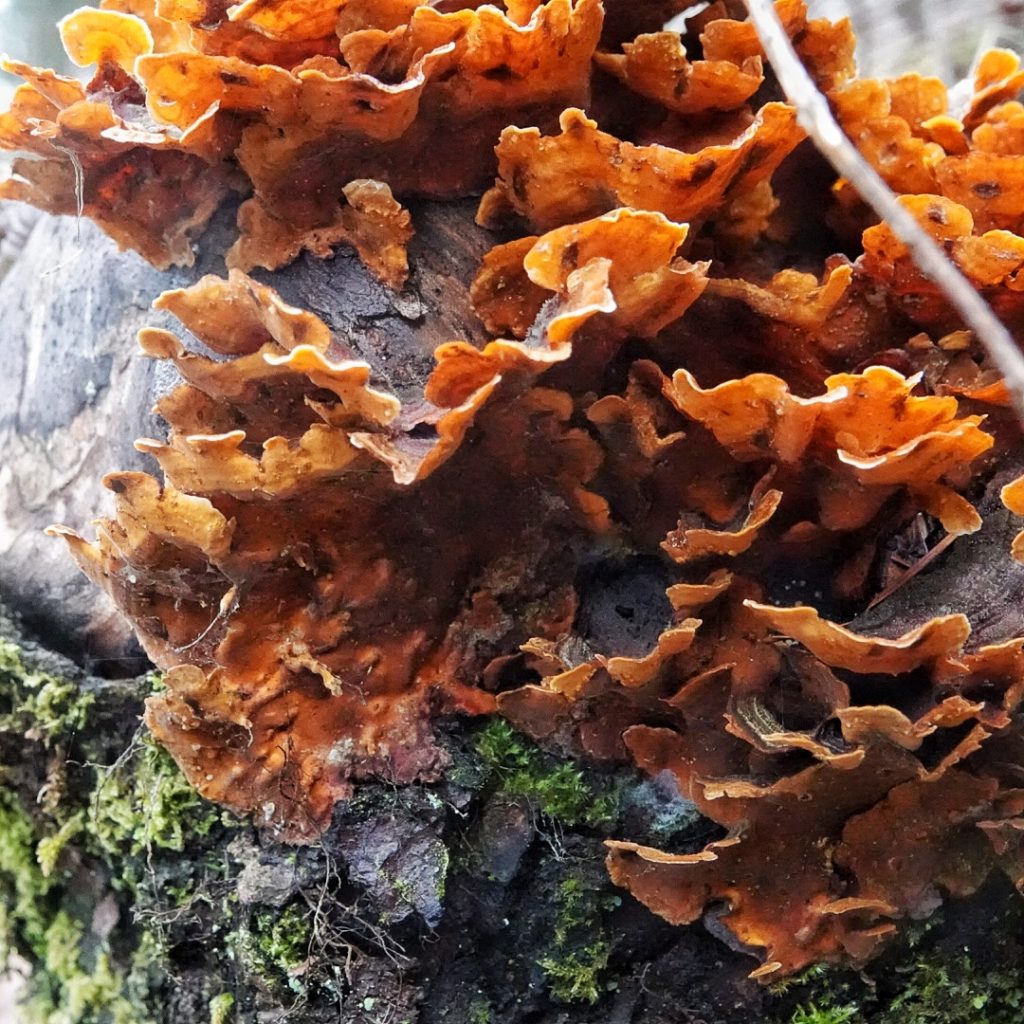
Eaten by– I feel like a bit of a broken record here, which was the reason for my little rant above, but I can find nothing specific about what eats this, though it probably includes, but is not limited to, larvae of flies in the families Platypezidae, Mycetophilidae, and Phoridae; springtails in the order Entomobryomorpha, as well as many other collembolans; probably also consumed by slugs, snails, woodlice, and some beetles in the families Leiodidae, Staphylinidae, Endomychidae, Tenebrionidae, and Erotylidae amongst others; and small mammalian herbivores.
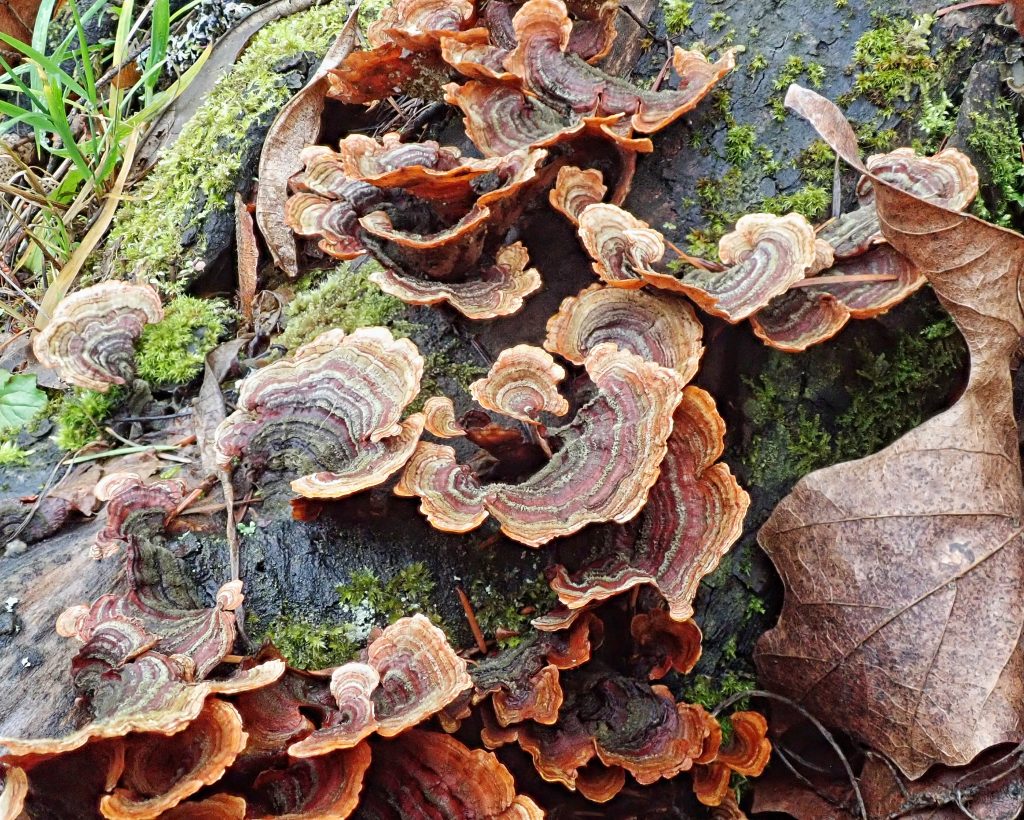
Etymology of names–Stereum is from the Greek for ‘tough/rigid’, which is somewhat accurate when trying to tear a cap, although there are many bracket fungi that are tougher and more rigid. The specific epithet hirsutum is from the Latin for hairy, and is especially true for younger specimens, although they get smoother with age.
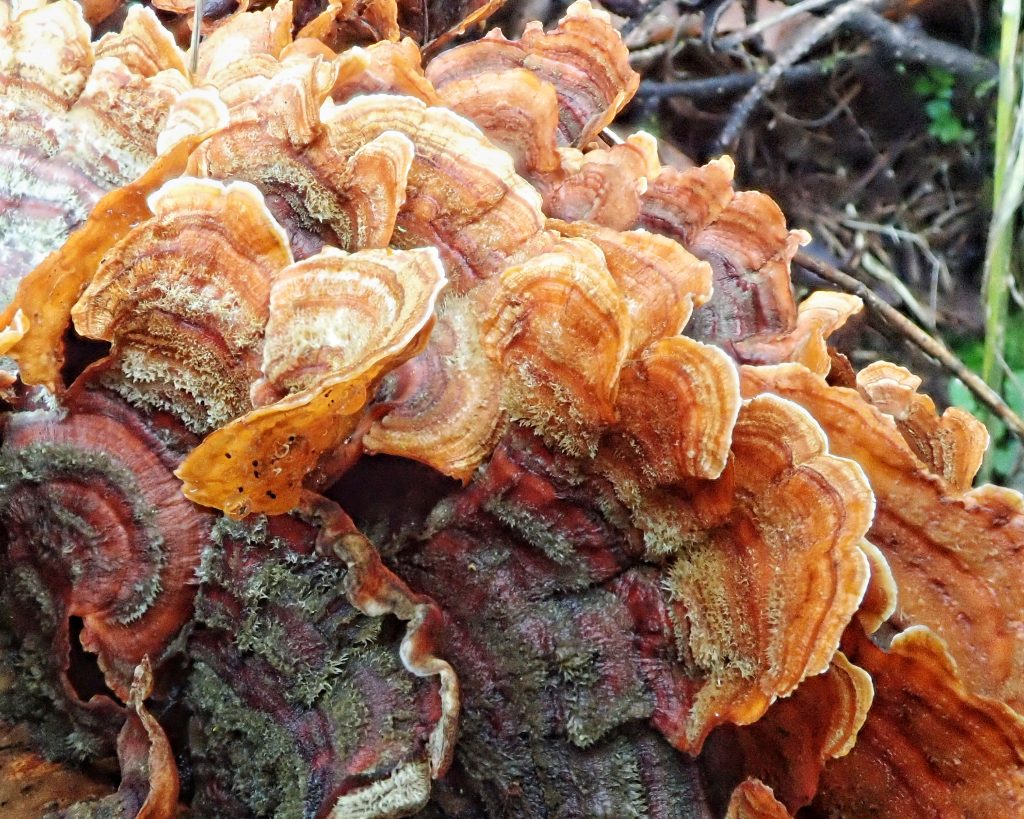
https://www.mushroomexpert.com/stereum_hirsutum.html
https://www.first-nature.com/fungi/stereum-hirsutum.php
https://www.mykoweb.com/CAF/species/Stereum_hirsutum.html
http://botit.botany.wisc.edu/toms_fungi/nov2000.html
https://ultimate-mushroom.com/poisonous/172-stereum-hirsutum.html
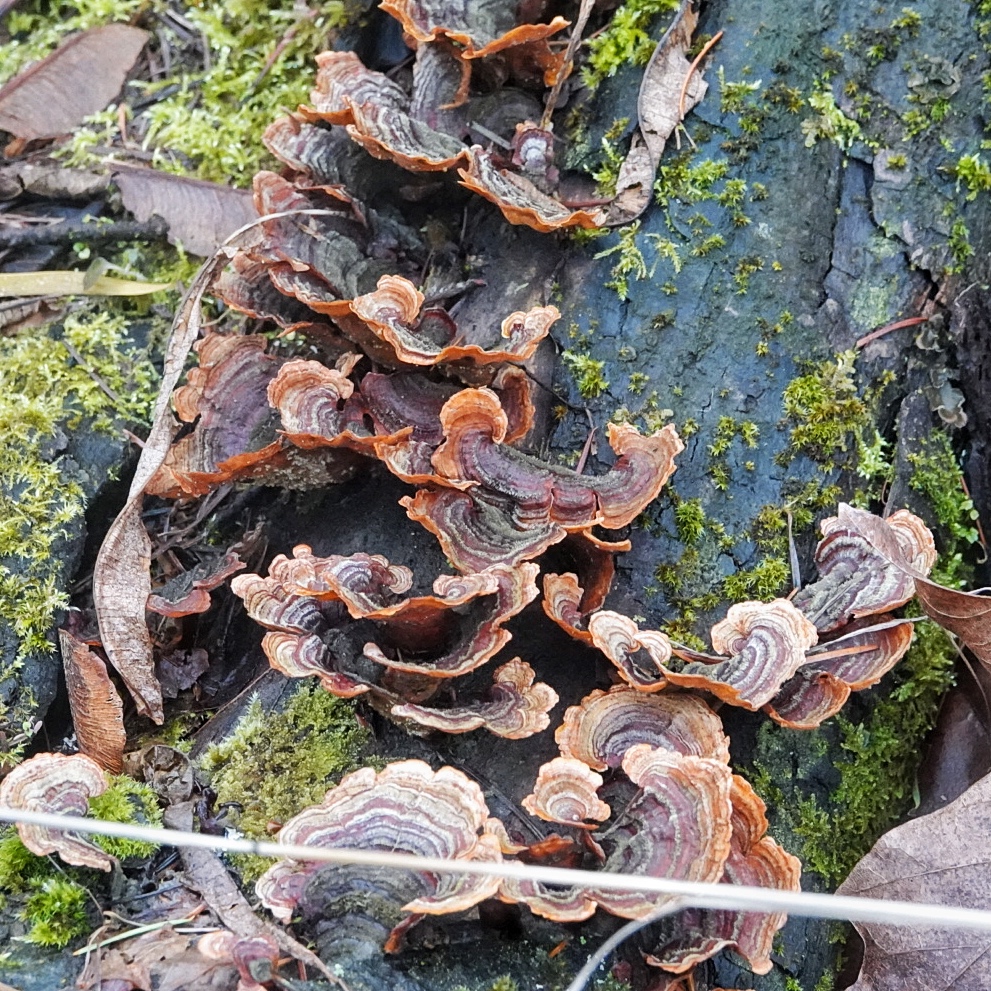
Dan,
I love these fungal presentations.
I ran into one I’ve never seen before walking along the Big Quilcene river last week: hair ice, involving the Exidiopsis effusa fungus. It blew my mind. Have you done a piece on this one yet?
I love your work–thanks!
Thank you, David! I haven’t done hair ice yet, because I haven’t seen it since before I started this project. Looking forward to finding some again and learning about it!
Beautiful:) Thank You:):)
Thank you for your appreciation!
Very good point about redirecting some energy and research toward ecology and relationships! No need to apologize for your “rant”. I really appreciate and enjoy your posts.